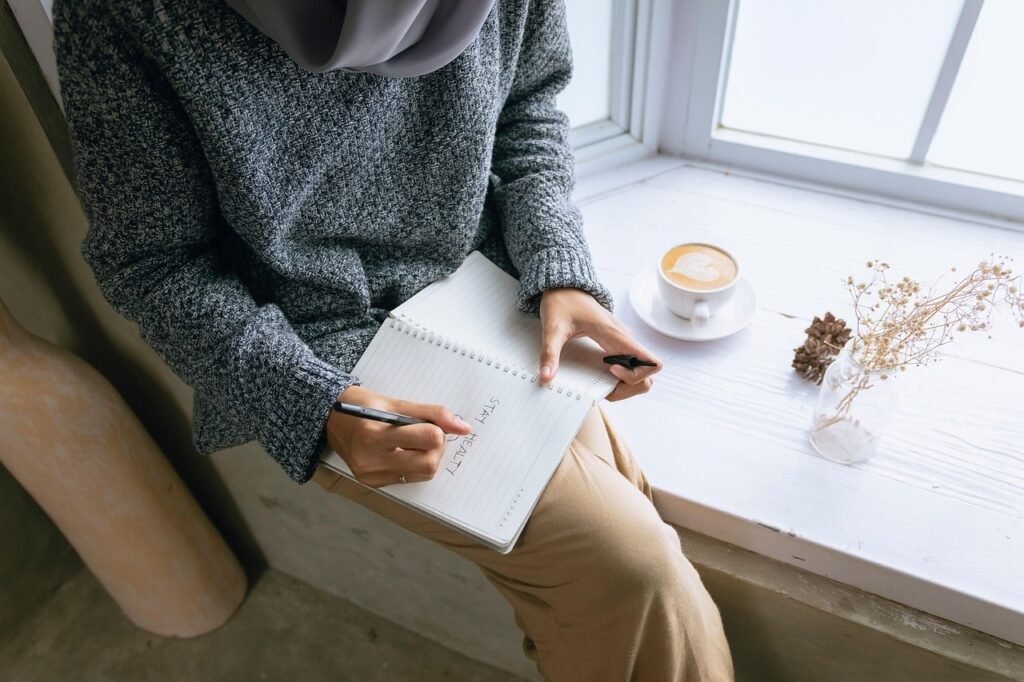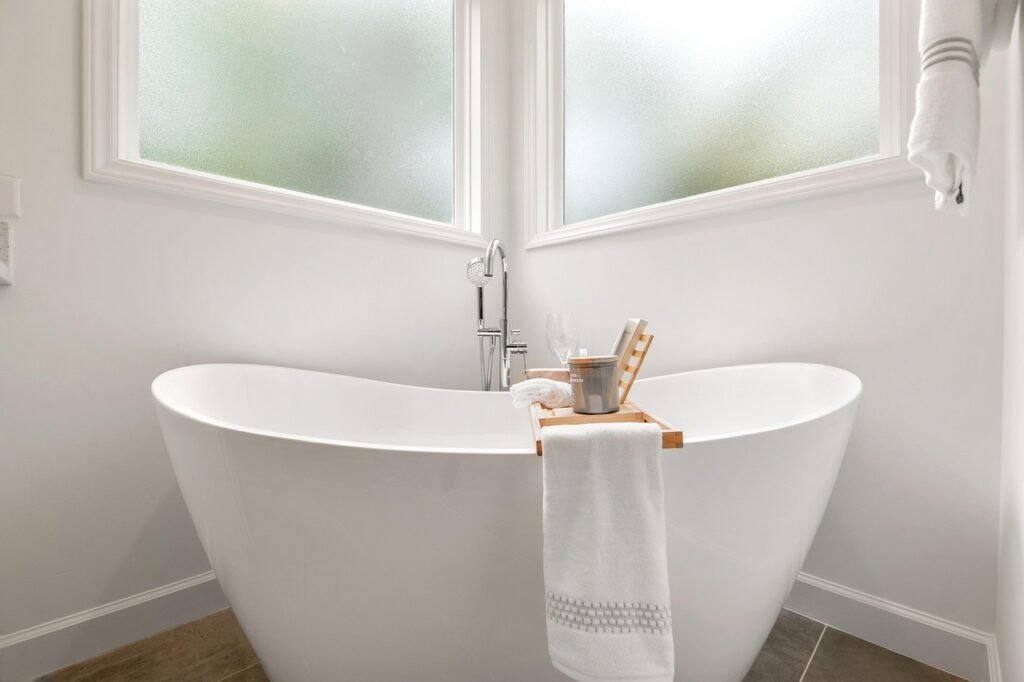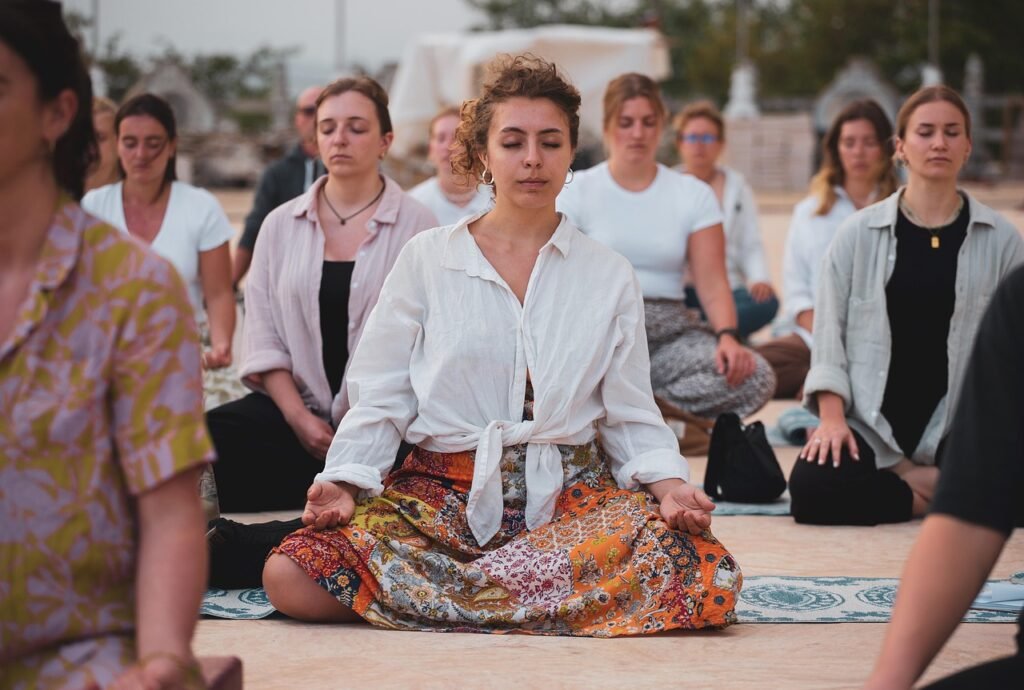
Understanding High-Functioning Anxiety
High-functioning anxiety often presents a unique set of challenges.
People experiencing this type of anxiety may appear successful and organized on the outside, while inside, they are dealing with constant worry and overthinking.
These individuals tend to be perfectionists, driven by an intense need to meet high standards, which can result in chronic stress.
This form of anxiety doesn’t typically prevent someone from fulfilling daily responsibilities, which is why it can go unnoticed or be misunderstood.
Yet, the internal battle of managing persistent thoughts and feelings can be exhausting.
Those with high-functioning anxiety often struggle with restlessness, muscle tension, and difficulty concentrating.
They may also have trouble sleeping, as their minds are frequently racing with concerns about future tasks or past events.
High-functioning anxiety can manifest in various behaviors.
For instance, people might seek reassurance from others more often, over-prepare for meetings or projects, or struggle to say no, fearing they’ll let someone down.
These actions are attempts to mitigate anxiety but can sometimes exacerbate the problem by adding more pressure.
Recognizing these patterns is the first step toward managing high-functioning anxiety.
Awareness allows us to explore practical strategies and holistic practices for managing anxiety effectively.
By understanding the ways anxiety affects our daily lives, we can take actionable steps to address it.
For example, some people benefit from setting clear boundaries around work and personal time to avoid burnout.
Others find relief through physical activity, which can help release built-up tension.
Simple lifestyle adjustments, like reducing caffeine intake or ensuring a balanced diet, can also have a positive impact.
Mindfulness routines for high-functioning anxiety are particularly beneficial.
By incorporating daily mindfulness practices, we can create a sense of calm and balance.
Techniques such as deep breathing, meditation, and mindful walking can help shift focus away from anxious thoughts and bring attention to the present moment.
These methods don’t just offer immediate relief but also build resilience over time.
It’s essential to understand that high-functioning anxiety is not a sign of weakness but a condition that requires mindful attention.
People living with this type of anxiety can still thrive and succeed; it’s about finding the right tools and practices to manage it effectively.
With the right approach, managing high-functioning anxiety becomes less daunting, allowing individuals to maintain their productivity while also nurturing their mental well-being.
Morning Mindfulness Practices

Starting your day with mindfulness can set a positive tone and provide mental clarity.
One powerful way to begin is with a gratitude journal.
Taking a few moments to jot down things you’re grateful for can shift your mindset from anxiety to appreciation.
Additionally, setting intentions through morning meditation is highly beneficial.
Studies show that participants who practiced mindfulness at home alongside an MBSR program saw greater improvements in their psychological functioning.
Incorporating these rituals can help manage anxiety from the start of the day.
A simple technique is deep breathing exercises.
Taking a few minutes to focus on your breath, inhaling deeply through the nose and exhaling slowly through the mouth, can help ground you and bring a sense of calm.
Another beneficial practice is mindful stretching.
Gentle stretches can awaken your body and mind, easing any muscle tension and preparing you for the day ahead.
Engaging in a short, guided meditation can also be effective.
Many mindfulness apps offer quick morning sessions designed to help you start the day with a clear mind.
These meditations can vary from focusing on the breath to visualizing a peaceful place, providing a mental reset before diving into daily tasks.
Another useful practice is setting a daily intention.
Take a moment to decide what you’d like to focus on for the day.
This could be a specific goal or a general mindset, like being patient or staying present.
Setting an intention can help you navigate the day with purpose, reducing feelings of overwhelm.
Additionally, incorporating movement, such as a morning walk, can be incredibly grounding.
Walking in the morning light can boost your mood and energy levels, making it a great way to start the day.
Pay attention to the sights, sounds, and sensations around you as you walk, allowing yourself to be fully present in the moment.
Creating a consistent morning routine that includes these mindfulness practices can significantly reduce anxiety.
By starting the day with a sense of calm and intention, you lay a foundation for a more balanced and less stressful day.
Midday Relaxation Techniques

Finding moments to relax during the middle of the day is crucial for maintaining mental well-being and managing high-functioning anxiety.
These midday relaxation techniques are designed to help you pause, reset, and continue your day with a renewed sense of calm.
A simple yet effective method is practicing breathing exercises.
Even just a few minutes of focused breathing can significantly reduce stress.
Try the 4-7-8 technique: inhale through your nose for four counts, hold your breath for seven counts, and then exhale through your mouth for eight counts.
This practice helps to activate your parasympathetic nervous system, which promotes relaxation.
Mindful walking is another excellent way to break up the day and reduce anxiety.
Whether you’re walking around your office or stepping outside for some fresh air, pay close attention to each step and the sensations in your body.
Notice the feeling of your feet hitting the ground, the movement of your legs, and your breath as you walk.
This helps bring your mind back to the present moment, providing a mental break from your worries.
Incorporating a short meditation session during your lunch break can also be highly beneficial.
Find a quiet space where you won’t be disturbed, sit comfortably, and close your eyes.
Focus on your breath or listen to a guided meditation from an app.
This practice doesn’t have to be long; even five to ten minutes can make a noticeable difference in your stress levels.
Another technique is progressive muscle relaxation.
This involves tensing and then slowly relaxing each muscle group in your body, starting from your toes and moving up to your head.
This can help reduce physical tension and promote a sense of overall relaxation.
Stretching exercises can also be a great way to relieve tension and refocus your mind.
Gentle stretches, especially for the neck, shoulders, and back, can alleviate physical stress and improve circulation, helping you feel more energized and less tense.
Creating a calming environment in your workspace can also support midday relaxation.
Consider adding elements such as a small plant, a calming scent through essential oils, or soft background music.
These small changes can make your environment more soothing and conducive to relaxation.
Taking a moment to engage in a hobby or a creative activity, even for a few minutes, can also be refreshing.
Whether it’s doodling, knitting, or listening to a piece of music you enjoy, engaging in something you love can provide a much-needed mental break and help reduce anxiety.
Hydration and nutrition also play a crucial role in how we feel.
Ensure you’re drinking enough water throughout the day and consider having a healthy snack, such as nuts or fruit, to keep your energy levels stable and avoid the irritability that can come from being hungry or dehydrated.
Lastly, practicing gratitude can offer a quick mental reset.
Take a moment to reflect on something you’re thankful for, no matter how small.
This can shift your focus from what’s causing anxiety to something positive, providing a brief but effective mental lift.
By integrating these techniques into your midday routine, you can create a more balanced and less stressful day, helping you manage high-functioning anxiety more effectively.
Evening Wind-Down Rituals

Creating a calming evening routine is crucial for managing high-functioning anxiety and ensuring a restful night’s sleep.
One effective approach is to establish a consistent bedtime schedule.
Going to bed and waking up at the same time every day helps regulate your body’s internal clock, making it easier to fall asleep and wake up feeling refreshed.
Engaging in calming activities before bed can signal to your mind and body that it’s time to wind down.
Consider incorporating a warm bath into your evening routine.
The warm water can relax tense muscles and create a soothing environment, helping to ease the day’s stress.
Adding a few drops of lavender essential oil to the bath can further enhance the calming effect.
Reading a book or engaging in another quiet activity can also be beneficial.
Choose a book that interests you but isn’t too stimulating, as this can help distract your mind from anxious thoughts without keeping you overly alert.
Avoid screens at least an hour before bed, as the blue light emitted from phones and computers can interfere with your ability to fall asleep.
Practicing gentle yoga or stretching can help release physical tension accumulated throughout the day.
Simple stretches or yoga poses focused on relaxation can calm both the body and mind.
Focus on your breath as you move through each pose, allowing yourself to fully relax into the movements.
Mindful journaling is another powerful tool for evening relaxation.
Spend a few minutes writing down your thoughts and feelings from the day.
Reflect on what went well and acknowledge any challenges you faced.
This practice can help you process the day’s events, making it easier to let go of lingering stress or worry.
Creating a serene bedroom environment can also support better sleep.
Keep your room cool, dark, and quiet.
Consider using blackout curtains, earplugs, or a white noise machine to eliminate disturbances.
Soft lighting and calming scents, such as lavender or chamomile, can further enhance the relaxing atmosphere.
Guided meditations or relaxation exercises designed for sleep can be particularly helpful.
Many mindfulness apps offer sessions specifically aimed at easing the mind into a restful state.
Listening to a guided meditation as you lie in bed can help you focus on your breath and let go of the day’s anxieties.
Establishing a technology-free wind-down period is also beneficial.
Designate at least 30 minutes before bed to unplug from electronic devices.
This break from constant connectivity allows your mind to transition from the day’s activities to a more relaxed state.
Listening to calming music or nature sounds can be another effective way to unwind.
Choose soothing melodies or ambient sounds that promote relaxation.
This auditory environment can help you disconnect from stress and prepare for sleep.
By incorporating these evening wind-down rituals into your nightly routine, you create a foundation for a more restful and rejuvenating sleep, helping to manage high-functioning anxiety more effectively.
Integrating Mindfulness into Daily Tasks

Mindfulness can be seamlessly woven into everyday activities, transforming routine tasks into opportunities for calm and focus.
Practicing mindfulness while doing daily chores, like washing dishes or folding laundry, allows you to stay present and grounded.
Focus on the sensations involved in these activities—the warmth of the water, the texture of the fabric, and the rhythmic movements of your hands.
These simple moments of focused attention can offer a break from anxious thoughts.
Using mindfulness apps can also be a practical way to integrate mindfulness into your daily routine.
These apps often provide guided meditations, reminders, and even short exercises that you can do throughout the day.
For instance, a quick two-minute breathing exercise before a meeting or during a break can help reset your mind and reduce stress.
Another effective technique is to practice mindful eating.
Instead of rushing through meals, take the time to savor each bite.
Notice the flavors, textures, and aromas of your food.
This practice not only enhances your eating experience but also encourages a slower, more deliberate pace, which can help calm a busy mind.
Mindfulness can also be incorporated into your commute.
Whether you’re driving, taking public transportation, or walking, use this time to practice mindful observation.
Pay attention to your surroundings, the sounds, the sights, and the feel of the ground beneath your feet or the seat beneath you.
This helps shift your focus from internal worries to the present moment.
Engaging in mindful listening during conversations can improve your connections with others and reduce anxiety.
Instead of planning your response while the other person is speaking, focus entirely on what they are saying.
Notice their tone, expressions, and words.
This not only enhances your communication skills but also keeps your mind anchored in the present.
Mindful pauses are another valuable practice.
Throughout the day, take short breaks to check in with yourself.
Close your eyes, take a few deep breaths, and observe how you feel physically and emotionally.
These mindful check-ins can help you stay connected to the present and manage anxiety more effectively.
By integrating mindfulness into these everyday tasks, you can create a continuous thread of calm and focus throughout your day, helping you manage high-functioning anxiety more effectively.
Community and Support

Engaging with a supportive community can make a substantial difference in managing high-functioning anxiety.
By connecting with others who share similar experiences, you can gain new perspectives and feel less isolated.
These connections offer a sense of belonging and can provide valuable insights into various mindfulness routines that may work for you.
Participating in mindfulness groups, whether in person or online, creates a space for shared learning and encouragement.
These groups often facilitate guided meditation sessions, discussions, and workshops that focus on practical techniques for managing anxiety.
The collaborative environment allows you to learn from the experiences of others and to share your own challenges and successes.
This exchange of ideas can be incredibly empowering and help reinforce your commitment to mindfulness practices.
Support groups specifically geared towards anxiety can also be highly beneficial.
These groups focus on understanding and coping with anxiety, offering practical advice and emotional support.
Listening to others’ stories can be comforting and provide new strategies for managing your own anxiety.
Sharing your experiences can also be cathartic and affirming, helping to build a supportive network around you.
Online forums and social media communities are another avenue for support.
These platforms allow for 24/7 access to discussions and resources related to mindfulness and anxiety management.
Being part of an online community can provide quick support during challenging moments and allow for ongoing dialogue with individuals who understand your journey.
It’s a way to stay connected and engaged, even if face-to-face meetings aren’t possible.
Workshops and courses on mindfulness and anxiety management can also offer structured learning and deeper insights.
Many of these programs are designed to teach specific techniques that can be integrated into your daily life.
They often provide a mix of theory and practical exercises, ensuring you understand the concepts and how to apply them effectively.
Participating in these programs can also introduce you to a new network of individuals with similar goals.
One-on-one sessions with a mindfulness coach or therapist who specializes in anxiety can provide personalized guidance.
These professionals can help tailor mindfulness practices to your specific needs, ensuring they are both effective and sustainable.
This personalized approach can help you navigate the complexities of high-functioning anxiety with greater confidence and clarity.
Incorporating community and support into your mindfulness journey can significantly enhance your ability to manage high-functioning anxiety.
By surrounding yourself with understanding and supportive individuals, you create a network that bolsters your efforts and provides the encouragement needed to continue your practice.
